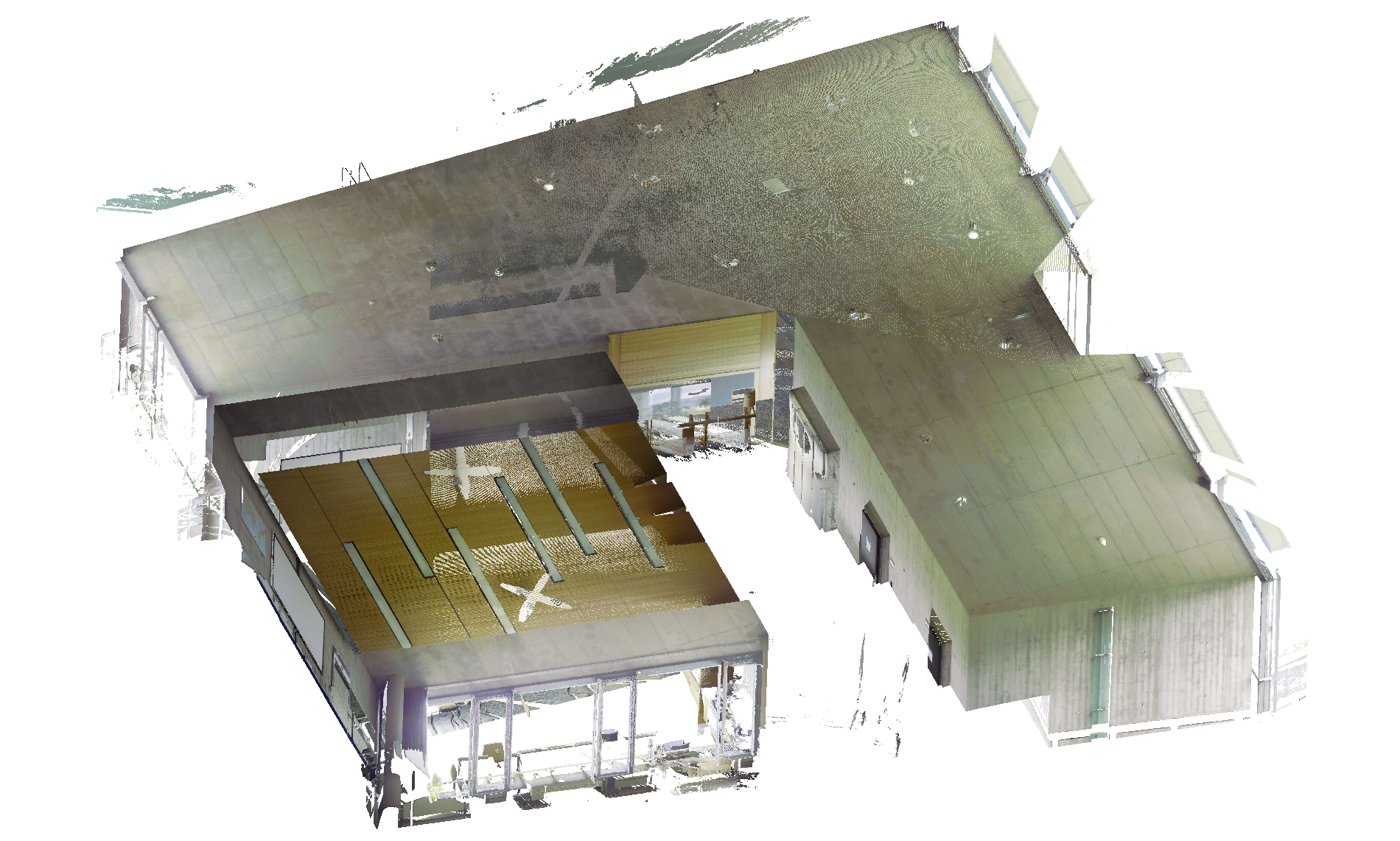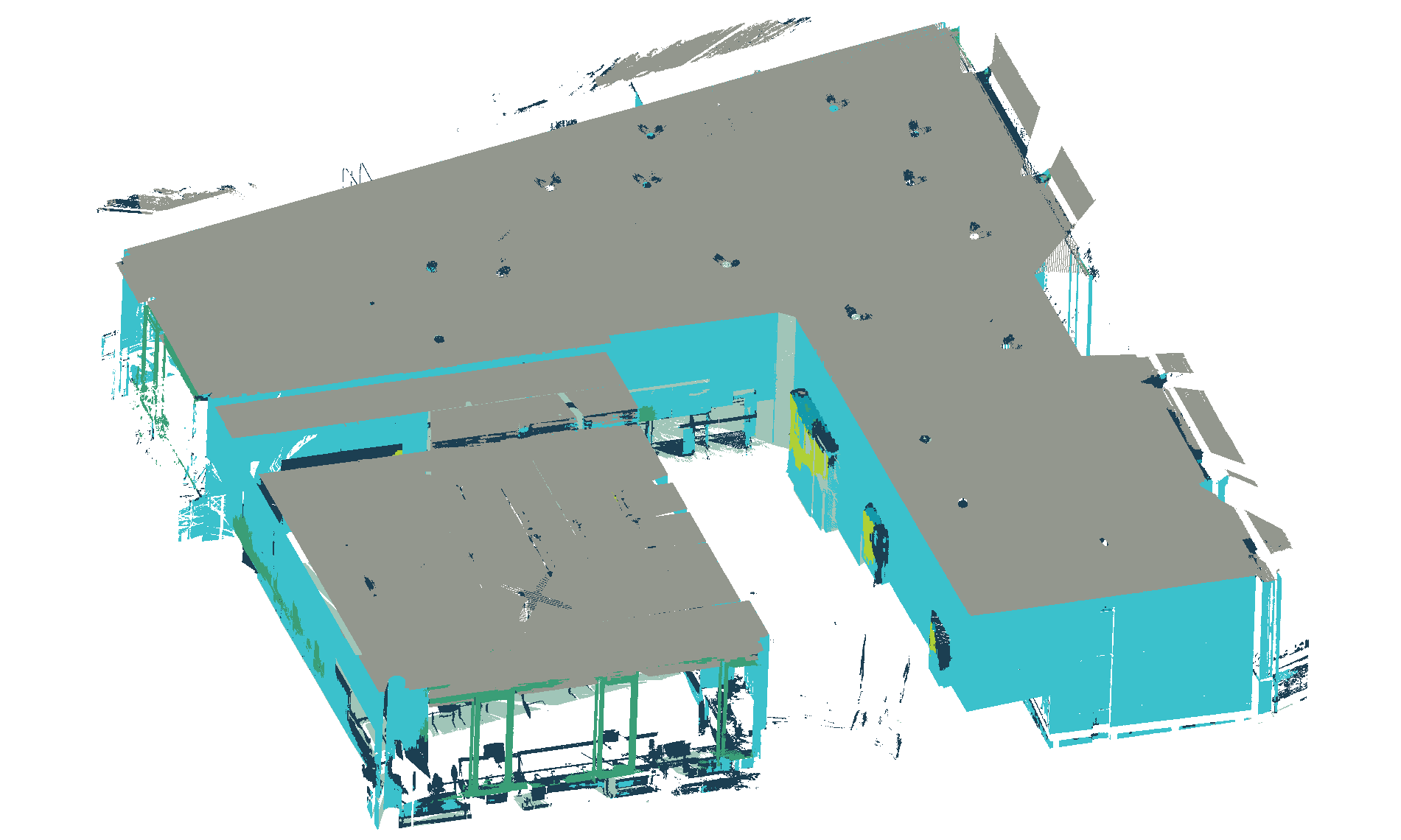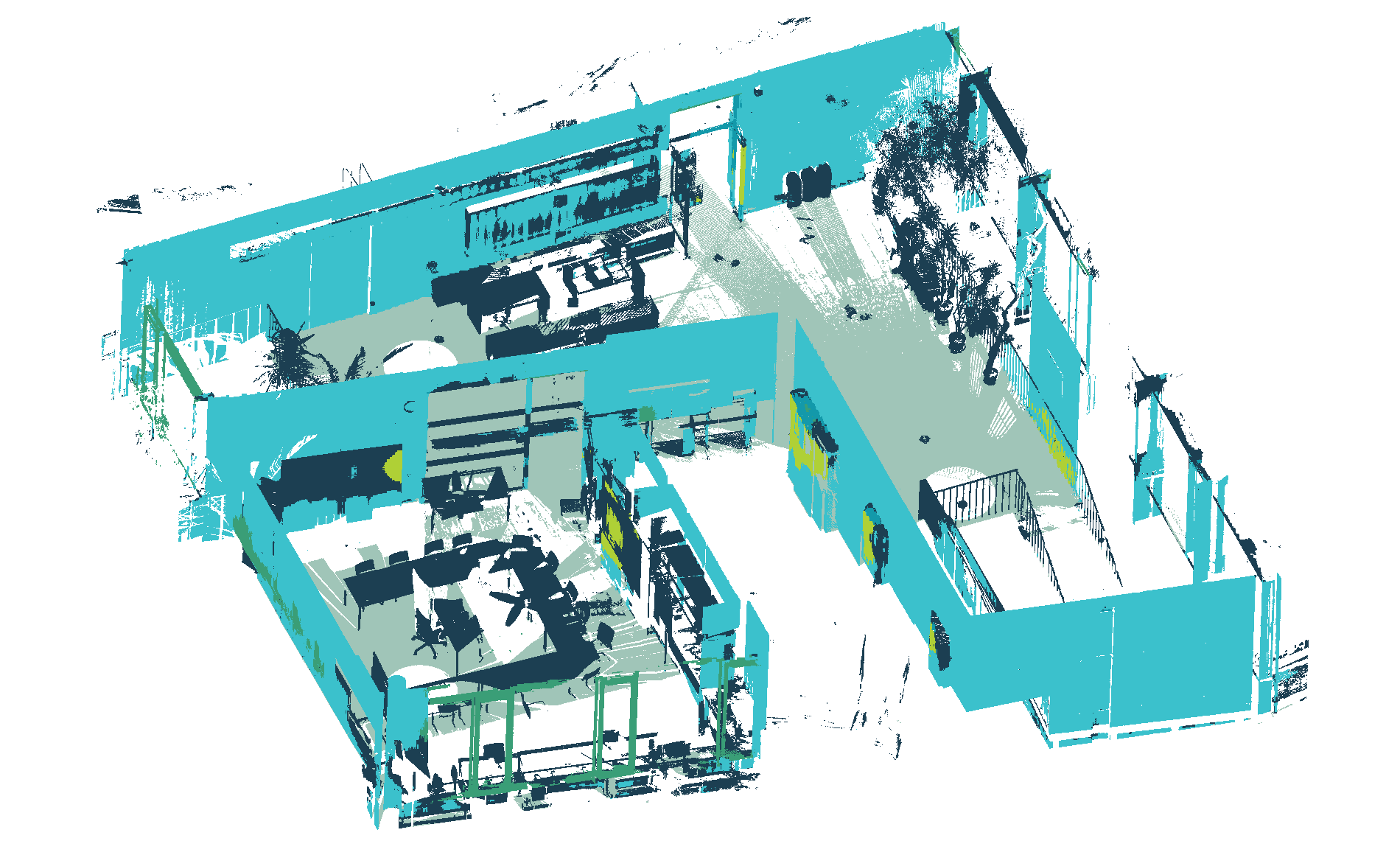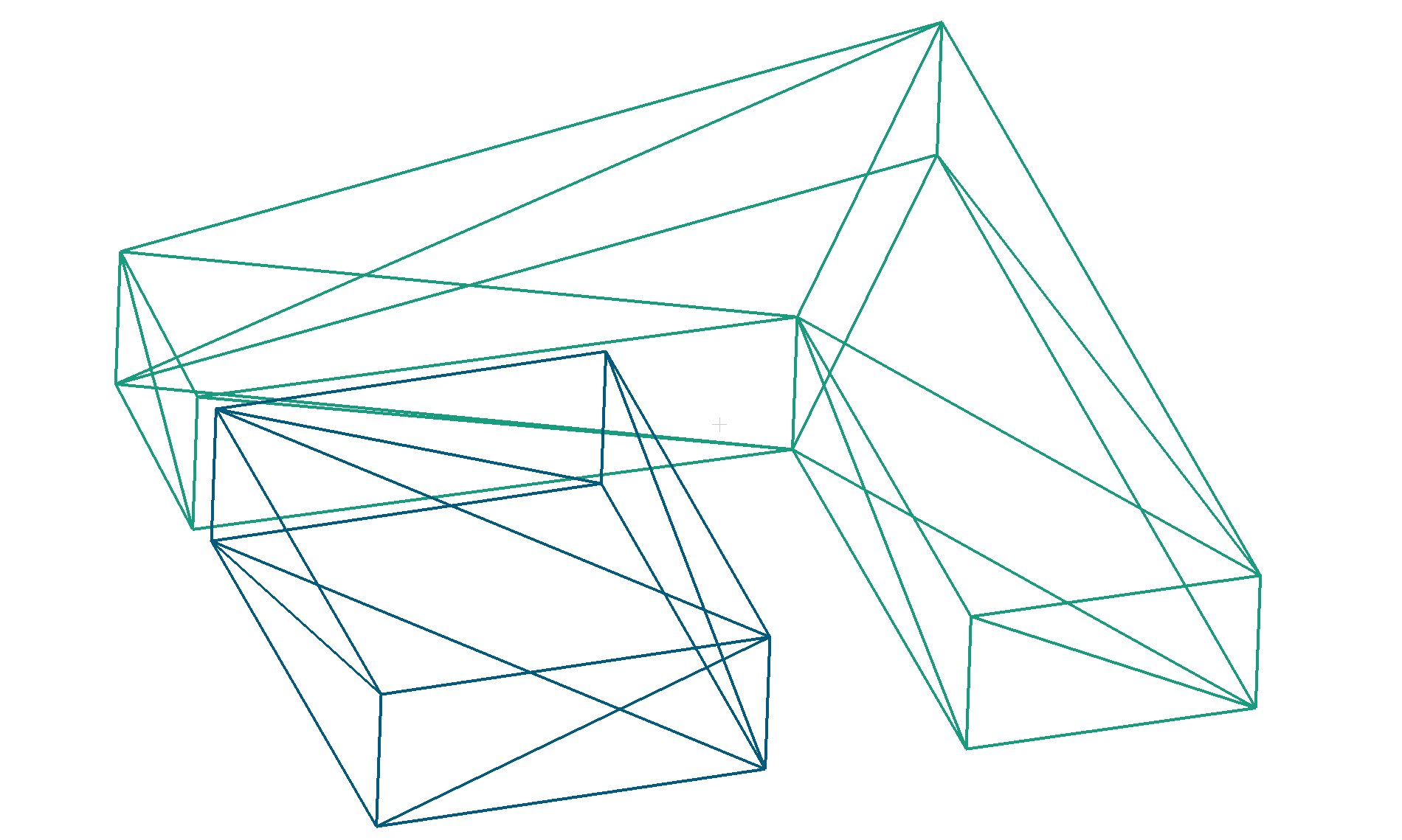Measuring large structures, such as physical infrastructure, generates large amounts of data. We use artificial intelligence (AI) methods to process the data generated by laser scanners and cameras so it can be used for applications such as building information modeling (BIM) or augmented reality (AR).
Data reduction and interpretation using AI is a prerequisite for geometric modeling
Point clouds are the most common data format in 3D surveying of surroundings, but they need to be pre-processed. We apply different data reduction and data interpretation strategies to process geometric measurement data for BIM and AR applications. To detect and localize relevant objects within the measurement data, semantic understanding of point clouds and image data is necessary. To this end, we’re developing artificial neural networks (ANNs) for specific interpretation tasks, such as interior spaces or certain types of physical infrastructure, such as bridges and façades. The resulting semantic understanding gives us further insights and allows us to restrict the captured scene to its main components. This provides the basis for geometric modeling of a large amount of 3D data.
Powerful hardware for training neural networks
Training neural networks requires powerful hardware to provide the vast memory required for processing large point clouds. We have powerful servers for training neural networks that allow us to perform parallel computing and process very large neural networks.



